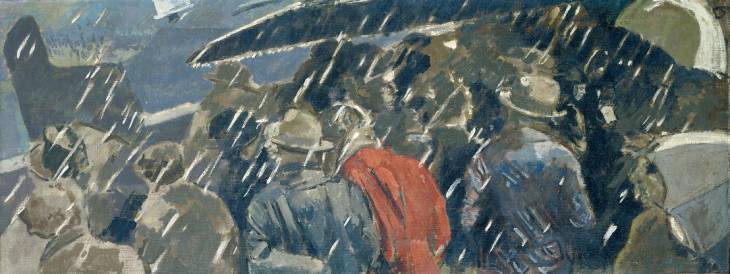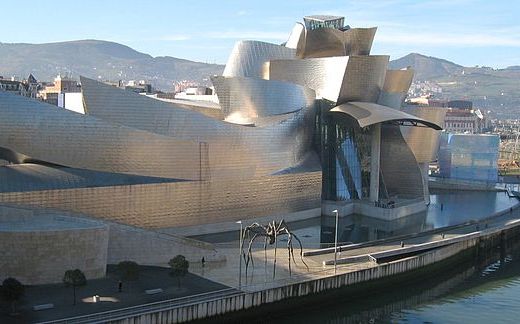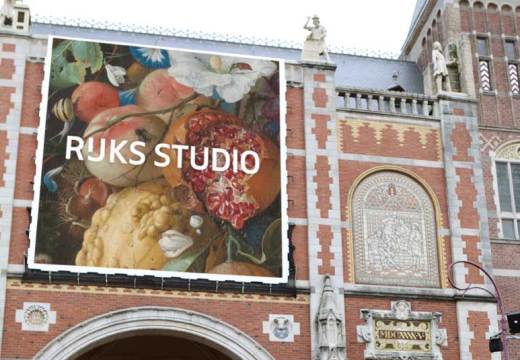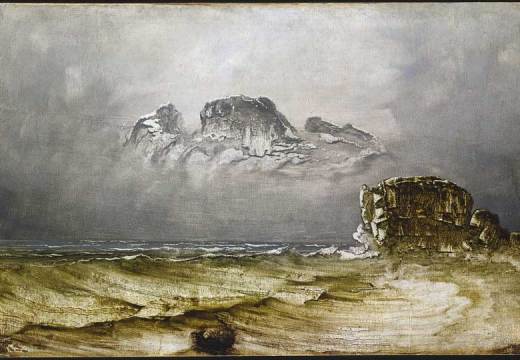This article first appeared in the January 2015 issue of Apollo. To preview the magazine and for subscription options, click here
On 8 September 1785, the Englishman Thomas Baldwin borrowed the ‘Daredevil Aeronaut’ Vincenzo Lunardi’s hot air balloon and flew it over Chester. Between piloting the craft and conducting experiments, he studied the view down, ‘a most exquisite and ever-varying Miniature of the little Works of Man, heightened by the supreme Pencil of Nature, inimitably elegant’. He produced two novel illustrations – the first of their kind – to accompany his account of the journey, Airopaidia (1786). One could almost be a map, except clouds mask the view and the traced flight path of the balloon pirouettes erratically on the flat page. The other shows Chester from the balloon’s ‘greatest elevation’, perfectly encircled by clouds. Recognising their strangeness, Baldwin published the first with an explanatory print, and both with sets of viewing instructions.
Two years after the first manned balloon flight, Baldwin had hit upon a conundrum that has vexed and inspired artists ever since. The view from above, in its otherworldly splendour, does not obey the rules on the ground. There are no fixed points or reliable horizons, and the caprices of light and weather make a shifting mess of the map; it is, in many ways, incommunicable. For a man of the Enlightenment this waywardness was a representational problem in want of a solution; for the 20th-century modernist, grappling with the changing aspects of modern life, it was an opportunity to explore.
Modern aviation and abstract art emerged almost simultaneously at the turn of the 20th century, and were self-consciously twinned from the outset. ‘Notre Avenir est dans l’Air’ (Our Future is in the Air), declared a painted pamphlet on one of Picasso’s Cubist table-tops from 1912 – the original was issued by Michelin to raise funds for France’s aviation programme. Since the Wright brothers debuted their biplane near the French town of Le Mans in 1908, Picasso and Braque had taken to calling themselves ‘Wilbur’ and ‘Orville’, enjoying the metaphor as they cut their art loose from the restraints of linear perspective. Modernists in other countries also made early bids for the skies: Marinetti, in his first Futurist manifesto of 1909, rounded off a long list of praiseworthy inventions with the aeroplane; Malevich, who launched Suprematism in 1915, spoke of ‘an urge to take off from the Earth’. The British Vorticists, sensing, perhaps, where their native country’s reputation still lay, praised ships over planes in their 1914 manifesto for Blast, though its illustrations did include Edward Wadsworth’s dynamic composition A Short Flight (c. 1914).
The First World War ushered in the age of large-scale aerial warfare, and with it came a series of artworks on the theme of flight. Richard Carline’s hovering view over Lens in France gives a sense of the reconnaissance pilot’s analytic eye (1918), while Britain’s ‘only Futurist’ C.R.W. Nevinson won acclaim for his depictions of aerial combat. Sweeping Down on a Taube (1917) – one of six lithographs completed for the Bureau of Information on the theme of ‘Building Aircraft’ – sets the warring aeroplanes on dizzying trajectories, against anarchic sheets of background light, expressing both the sensory confusion of powered flight and the utter focus of the men in the midst of it. ‘If all Futurists…conveyed movement with such imaginative power as Mr. Nevinson…’ argued Frank Rutter on seeing some of the young artist’s first airscapes in 1915, ‘we should have no quarrel with them’. Nevinson, however, had also seen the devastating effects of aerial warfare on the ground. ‘Dunkirk was one of the first towns to suffer aerial bombardment,’ he recalled in his autobiography, ‘and I was one of the first men to see a child who had been killed by it’. He memorialised the victim in a painting called A Taube (‘A Dove’; 1916) – named ironically after the plane that killed the child – which shuns Futurism’s visual tricks better to fit the stark subject.
This contradiction between the glamour of flight as a feat in itself, and the danger of a world opened up to the aerial gaze, was one of the defining features of aerial art in the interwar years. Public enthusiasm for flight was undiminished, and well provided for, as ex-servicemen opened or joined entrepreneurial new businesses – air transport, air mail, and air shows among them. Flight could make celebrities of its pioneers. In 1932, Walter Sickert painted Miss Earhart’s Arrival from a photograph in the Daily Sketch; shown on her arrival at Hanworth Air Park in Middlesex, the popular aviator is almost lost in the crowd of well-wishers braving the rain to celebrate her solo crossing of the Atlantic.
The cult of the airman placed aviators symbolically – as well as geographically – at a godlike remove from those on the ground. In peacetime, it fuelled their celebrity, but this distancing took on a sinister aspect as the world looked towards another war. In 1929, Nevinson’s former Futurist collaborator Marinetti helped launch aeropittura; an Italian movement that glamorised the feats of the country’s air force. By then, Nevinson was voicing deep concerns about the militarisation of the air. In 1934 he published Exodus A.D.: A Warning to Civilians, a novel co-written with Princess Paul Troubetzkoy that envisages a devastating aerial attack on London. One of the protagonists, injured and delirious, imagines himself in the clouds with a monstrous God: ‘Richard followed His intent stare. At first he saw little; there seemed veils of smoke which poured upward, until with a restless, irritated gesture of His vast paws, God swept them away…Below Him there seemed to be a vast unrolled map, clear and patterned like the view of the earth from an aeroplane.’ Out of the ruins presses the evacuating mob, ‘oozing out of London, covering the ground… Black with dead’. When war did break out, Nevinson returned to aerial subjects with a dramatically altered style. He presented Battlefields of Britain to Winston Churchill as a gift for the nation in October 1942, a year that saw major bombing campaigns over both Germany and Britain. It evokes the scene quietly; a sublime, privileged vista of drifting sky, but with no guarantee of what might emerge if the smoky clouds were batted away.
At around the time Nevinson published his book, John Piper began experimenting with a type of abstraction indebted to Cubism’s experiments with multiple, and often aerial perspectives. Abstraction was often described in terms of flight in Axis, the avant-garde journal edited by Myfanwy Evans (who married Piper in 1937): ‘His images become winged, and fly,’ wrote Anatole Jakovski of Jean Hélion in the first issue, reserving the highest of praise for the ‘one “genuine” among young painters’. In his own essay for the journal, ‘Prehistory from the Air’ in 1937, Piper gave an eloquent account of flight and abstraction’s synchronised ascent. ‘Flying (whether we do it ourselves or not) has changed our sense of spaces and forms and vistas enormously…the significant thing being that from the air horizons vanish,’ he declared, before making essentially the same claim for abstraction. ‘At its simplest, the change is one of elevation to plan. The picture has tipped over backwards onto the floor, and in being raised again it has brought part of the floor with it.’ String Solo (1934) deftly illustrates the concept. Its rounded, overlapping planes and meandering string trail recall the rough patchwork of the earth, and inadvertently echo Thomas Baldwin’s early aerial image. Only here, the visual ambiguities are deliberate. It is the point of such paintings that they can depict a person, a still life, or a landscape, depending (quite literally) on one’s point of view. Abstract art both simplifies and synthesises modern life’s many facets: but the aerial perspective alone could encompass them all.
Piper’s aerial viewpoint is in itself an abstraction; a stable, hovering visual tool that neither relies on, nor tries to express, the lived experience of flight. But by the time ‘Prehistory from the Air’ was published, the reality of modern aviation was catching up with him too. In April, German bombs had fallen on Guernica, and the sky over Europe could no longer be seen as a free or international zone. ‘The looming war made the clear but closed world of abstract art untenable for me,’ he recalled decades later, and under its shadow he brought his own art back to earth. The following year he wrote ‘Abstraction on the Beach’ for the French journal Vingtième Siècle, retreating to a more certain border (though with eyes still across the Channel), and in his paintings he reinstated the horizon.
Even before 1937, Piper and other British artists had situated their aerial views deliberately over English shores. He concluded his Axis article with two views of Silbury Hill, part of the prehistoric Avebury complex in Wiltshire: the first, a 1723 engraving by William Stukeley, is all contours and height; the second a ‘flat and subtle’ photograph from the air. Avebury owed its popularity in the 20th century – and parts of the site their survival – to the archaeologist Alexander Keiller, who bought up the land in the 1920s after the wireless company Marconi had threatened to plant a radio mast on one of its ancient hills. His survey flights over the area turned up traces of lost prehistoric sites, and the aerial photographs taken by him and fellow archaeologists (such as O.G.S. Crawford, the ex-reconnaissance pilot behind the archaeology division of the Ordnance Survey) struck Piper as ‘among the most beautiful…ever taken’. Here were abstractions that could tell a story: that could spot England’s old foundations lying low under pale grass, or given away in the raking light of the afternoon.
Aerial archaeology represented a neat marriage of modernity and history that many British artists of the time craved. The pilot in his plane could sound the depths of Britain’s buried past, bring it to light, and draw it accurately onto the map next to signs of modern infrastructure. But for the British modernist as much as the diligent archaeologist, it was equally important to explore the landscape on the ground. Paul Nash, who like Piper read Crawford’s journal Antiquity (which published aerial photographs), had first come across the Avebury standing stones in the summer of 1933. His lasting recollection of the site was one of history emerging from the soil: ‘Some [of the stones] were half covered by the grass, others stood up in cornfields were entangled and overgrown in the copses, some were buried under the turf.’ His Landscape of the Megaliths (1934) is an enigmatic collection of views and clues, and while it has a horizon, it feels unfixed like an aerial view. Contour lines circle an ancient copse; a path sidles up a yellow field of colour, past standing stones towards the clouds; and at the top, a shaded circle echoes the bird’s-eye view of Silbury Hill.
During the Second World War, Nash’s megaliths were replaced by fallen planes. The artist – famous for his damning representations of the First World War – was assigned to the Air Ministry as an Official War Artist in 1940 while the Battle of Britain played out overhead. Alongside portraits of British aircraft readying themselves for war, he took to painting ‘the incongruous disasters befalling the Luftwaffe aircraft day by day; crashing into the cornfields or tearing up the seashores… disturbing the pheasants’. His Raiders watercolours were followed by Totes Meer (Dead Sea) (1940–41), the famous oil of an aircraft dump at Cowley, transfigured by the pale moon into a frozen tide of wreckage.
Nash conscripted the German planes into his personal brand of surrealism, but for Battle of Britain (1941) he turned instead to the strangely abstract spectacle of the war in the sky. Over a nondescript channel, white contrails rear up like a wall. Planes and balloons advance in formation, and a stricken aircraft’s smoke trail sketches a treble clef down to the sea – a dark reminder, as Nash wrote, of ‘how terrifyingly gay and decorative war and especially war in the air, can look’. Military aviation has always carried with it the apparatus for its own abstraction – searchlights, contrails, camouflage – but in the summer of 1940 it outdid itself. Writing about ‘The Personality of Planes’ for Vogue in 1942, Nash noted that it was the machines themselves who were ‘the real protagonists’ of the war, the pilots’ operations ‘directed mechanically’. If they seem naturalised into Nash’s landscapes it is, in part, because they had become so much a part of modern life; unnatural in their essence, but an ineluctable force difficult to resist.
Nash was, from childhood, fascinated with flight, though chronic poor health prevented him from ever going up in a plane. At the same time as he worked on his war pictures, he painted visions of vast flowers looming and drifting over British fields. He saw in them all the same thing. ‘[I]t is death I have been talking about this whole time’, he wrote in Aerial Flowers (published posthumously in 1947). ‘[D]eath, I believe, is the only solution to this problem of how to be able to fly. Personally, I feel that if death can give us this, death will be good.’ It is an irony that an artist so famous for his depictions of aerial war should also express such a spiritual notion of the skies. His Cloudscape of 1939 is empty of aircraft, but, unlike Nevinson’s Battlefields of Britain, neither is it distracted by the world below – a reminder, perhaps, of what flight could mean if, having achieved it, man could only resist from turning his eyes back down to earth.
This article first appeared in the January 2015 issue of Apollo. Click here to buy the issue.
Related Articles
Nevinson’s prints at Osborne Samuel, London (Maggie Gray)
‘Another Life, Another World’: Paul Nash’s watercolours (Maggie Gray)
‘British Art at War: Paul Nash’ on BBC Four (Camilla Apcar)
‘Conscience and Conflict’ at Pallant House Gallery (Emma Crichton-Miller)
‘Gerardo Dottori: The Futurist View’ at the Estorick Collection (Jon Day)
Unlimited access from just $16 every 3 months
Subscribe to get unlimited and exclusive access to the top art stories, interviews and exhibition reviews.














![Masterpiece [Re]discovery 2022. Photo: Ben Fisher Photography, courtesy of Masterpiece London](http://www.apollo-magazine.com/wp-content/uploads/2022/07/MPL2022_4263.jpg)
Why are fathers so absent from art history?